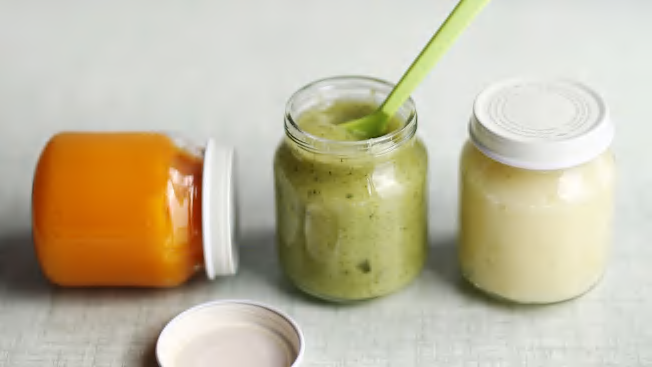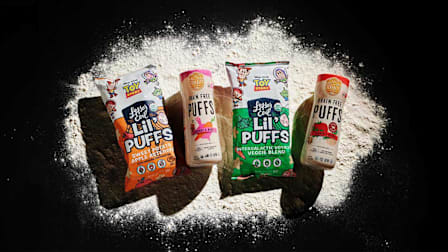Now You Can Check for Dangerous Heavy Metals in Baby Food
A new law means parents can compare products before they buy

As parents, the last thing we want is for our kids to be exposed to anything harmful, especially in their food. A California law that recently went into effect may help reduce that concern for parents across the country.
The Baby Food Safety Act of California, otherwise known as AB 899, follows years of concern over the levels of heavy metals in foods for babies and young children under the age of 2. (A similar bill, the Baby Food Safety Act of 2024, has been proposed at the federal level but is still in committee.)
Why Heavy Metals in Baby Food Are a Cause for Concern
Heavy metals such as lead, cadmium, and arsenic are present at generally low levels in many of the foods we eat. The Food and Drug Administration has proposed limits on heavy metals for certain baby foods. But while all humans are exposed to some heavy metals, the level of exposure—and the age at which the exposure occurs—can have a significant effect on health outcomes.
Young children are particularly vulnerable to heavy metal exposure due to several factors. Their organs are still developing, making them more susceptible to adverse health effects from heavy metals than adults. Children also eat more food relative to their body weight than adults, making heavy metal levels in baby food particularly concerning.
"Heavy metals can affect child development in various ways," says James E. Rogers, PhD, director of food safety testing and research at CR. "At high levels, exposure can delay and impair brain development, slow growth, and increase cancer risk, learning difficulties, and behavioral concerns, including attention disorders."
How to Use the New Information
The California bill aims to give parents the information they need to make the healthiest possible food choices for their children. But it can feel overwhelming to be faced with this level of scientific detail when you’re just trying to decide what pouch or jar to buy. If you feel a wave of guilt learning your baby’s favorite dinner might not have been as healthy as you previously thought, you are far from alone. Here’s what to consider:
Focus on offering a variety of nutritious foods. Offering your child a diverse range of fruits and vegetables is the best way to ensure a balanced and healthy diet. For instance, a baby food product (or even homemade baby food) containing sweet potatoes may be higher in heavy metals than some other vegetables, but this doesn’t mean your child should never eat these nutrient-dense veggies. Serve small portions in moderation, in rotation with other nutritious foods.
Compare brands. Whether you live in California or not, all parents can take advantage of this new law to compare baby foods for heavy metal test results. The lower the levels the better, and the more transparent a company is about their test results, the better. Consumer Reports and Unleaded Kids have partnered to track manufacturers’ test results and transparency—including how specific baby food manufacturers have responded to the new requirements (so far).
Take a deep breath. Focus on using this information to make the healthiest food choices you can. If you find yourself paralyzed by information overload, Consumer Reports performed an assessment in 2023 examining levels of arsenic, lead, and cadmium across 14 different baby food products. The results include recommended serving guidelines for different types of food products, including purées, teething wafers, puffs, and other snacks.
CR tracked how baby food manufacturers responded to the new required disclosures—see our score card.
What to Expect (and Hope for) in the Future
Food safety and policy experts say there is still work to be done regarding accountability and transparency.
“The ideal option is for consumers nationwide—not just in one state—to be able to easily find test results on company websites so that they can compare before making purchasing decisions,” says Brian Ronholm, director of Food Policy at Consumer Reports. “As for food safety for babies and young children in general, there needs to be more of a focus on prevention strategies from the FDA that would help prevent another cinnamon applesauce recall from happening.”
The FDA’s ongoing Closer to Zero initiative, established in 2021, aims to reduce levels of toxic elements in food for babies and young children, but progress has been slow. Lead limits were recently set for baby food, but many of the action items have deadlines that won’t be completed until the end of 2025. While healthy changes may be slow in coming, making information available to consumers is a step in the right direction.




















